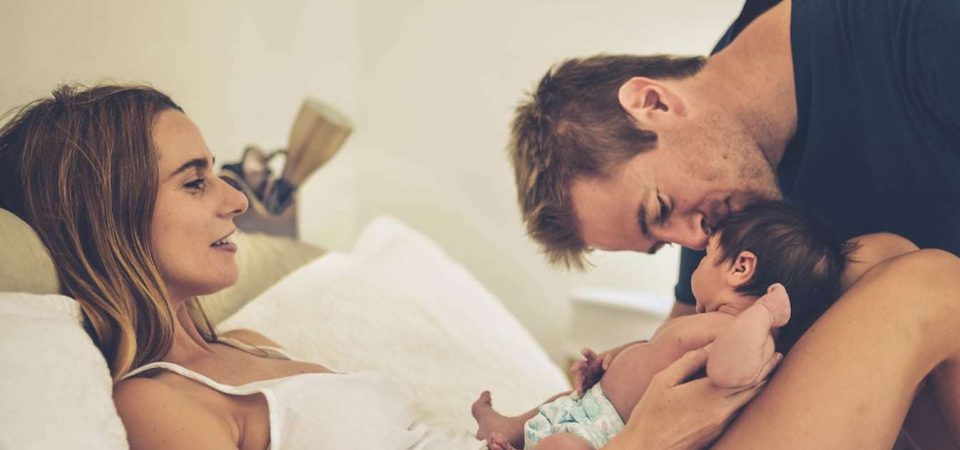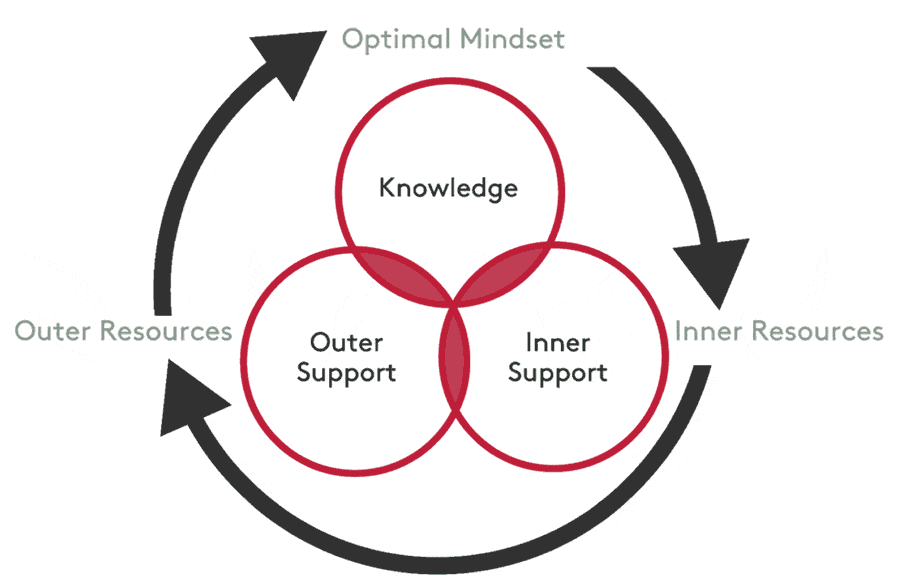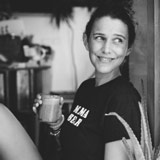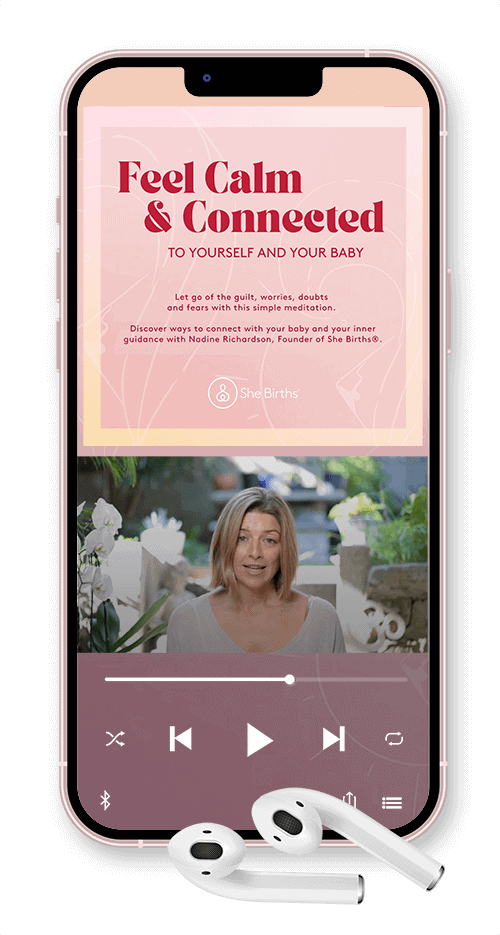Save $50 on ANY product use code NY50
Buy Now, Pay Later
Paypal Pay In 4 Available At Checkout
Over four years the She Births® antenatal education program was scrutinised in large randomised controlled trials within two mixed demographic hospitals in Sydney, Australia. The study was conducted by Western Sydney University and the National Institute of Complementary Medicine.
The She Births® program was chosen for this study because it incorporates more complementary medicine modalities than other childbirth courses and our own private normal birth rates are so high (83%).
This groundbreaking research highlights dramatic improvements for the Study group, who received the She Births® program, in comparison to the Control group who received the standard hospital birth preparation course.
Couples in the Study group had a relative:
The study group also experienced shorter labours, particularly second stage (pushing) by a mean of 32 minutes. There was also a 12% reduction in perineal trauma (84.7% vs 96.4%). Overall a 44% increase in natural vaginal births was found using the unique She Births® education program.
In the last decade numerous international studies have been undertaken in isolation on certain elements of birth preparation with results showing marginal improvement. According to Cochrane Review other studies of childbirth education programs on their own have not shown any significant improvements.
This is the first time a study on birth education has shown such significant results. There is now great potential to positively change the way women and critically their partners prepare for birth around the world.
The Complementary Therapies for Labour and Birth Study gives evidence to the fact that it is possible to create a better birth with the right education and demonstrates that more normal births are also safer for our babies. It suggests that the commonly experienced cascade of intervention is avoidable with the right education and the over treatment within maternity systems can be changed via empowerment of couples.
The She Births® methodology has continued to be researched since the original study by psychologists, leading medical schools, midwives and other academics.
We are currently awaiting results from one major university, and publications are expected from 2024 onwards.
We initiated a pilot within the private hospital system with over 120 couples, and those results will be discussed in Nadine’s upcoming book.
The Birthing Institute is committed to ongoing research and development on a global scale. We encourage all our families who participate in the online or face to face training complete our Post Birth Survey and continually assess and update our materials accordingly.

Results from the She Births® – Post Birth Survey were randomly completed by over 200 She Births® mums and demonstrate significantly lower medical assistance rates, more normal birth rates and very high degrees of birth satisfaction.
She Births® mums are a mixture of both high and low risk mums, primarily primigravidae and birth within both public and private hospitals.
83% of She Births® mums gave birth vaginally or had what is defined as a ‘normal birth’ compared to the current NSW average below 57%.
Read more about the current normal birth rates in Australia and hear from She Births® couples in the Sydney Morning Herald.

The effectiveness of She Births® comes from the synergy of elements but also the unique philosophy and background of creator Nadine Richardson – prenatal yoga teacher, mother, doula and daughter to an extended family of doctors and specialists. The course is founded in eastern wisdom and yet is made easily accessible to people from all backgrounds, professions, ethnicity and socioeconomic groups.
It incorporates a unique language and referencing to the ‘pain of childbirth’ and a sequencing that allows a deep transformation for every couple that attends. She Births® also includes a new form of self-hypnosis called BMIT – Body-Mind Integration Technique created by Nadine Richardson and based on the ancient art of yoga nidra. Unlike regular hypnosis it allows women to not only relax but to connect deeply with their body, the channel for birth.
Through the unique She Births® method a deep transformation can take place within every couple, that fosters both a sense of trust in birth and a security in each other. All of these factors are critical to creating a more natural and beautiful birth experience, but also in creating the foundation for a stronger and more resilient family going forward.
say our program allowed them to create a beautiful birth, no matter what unfolded
say She Births® allowed them to connect more deeply with each other
say that they could communicate more effectively with their caregiver and engage in decision making
of mums say that prenatal yoga was critical to helping them prepare for birth
Individual birthing tools that have been previously studied and show some improvements in birth experience are all taught in the She Births® Online Program and Weekend Courses. They include:
You can read more about the evidence-based tools included in the She Births® course below and further information is given in our evidence-based folders at every face to face course.

Proven to decrease the duration, discomforts and complications of labour.
(Chuntharapat S, Petpichetchian W, Hatthakit U. Yoga during pregnancy: effects on maternal comfort, labor pain and birth outcomes. Complementary Therapies in Clinical Practice. [Randomized Controlled Trial Research Support, Non-U.S. Gov’t]. 2008 May;14(2):105-15.)
Smith et.al. (2010) has reported in the most recent Cochrane Review of acupuncture and acupressure during labour that pharmacological analgesia was reduced in one trial of acupuncture compared with placebo, and compared with standard care. That fewer instrumental deliveries from acupressure was found compared with standard care and that pain intensity was reduced in the acupressure group compared with a placebo control and a combined control.
One of the most significant outcomes of childbirth occurring more frequently in a hospital setting, with increased emphasis on monitoring and medical management, is that women have become required to lie in a recumbent or supine position to accommodate these changes. The bed often became the focal point of the room, with little other space for walking or changing position (*Simkin PP, O’Hara M. Nonpharmacologic relief of pain during labor: systematic reviews of five methods. American Journal of Obstetrics and Gynecology. [Review]. 2002 May;186(5 Suppl Nature):S131-59.).
Much of the monitoring devices are now designed for ambulation and emersion in water, so even if a woman is being continuously monitored, she will still be able to walk, move, squat and get in the bath or shower. Roberts et.al. found that changing position every 30 minutes or so, was important for the promotion of efficient uterine contractions (**Roberts JE, Mendez-Bauer C, Wodell DA. The effects of maternal position on uterine contractility and efficiency. Birth. [Research Support, U.S. Gov’t, P.H.S.]. 1983 Winter;10(4):243-9.).
In a systematic review by Simkin and O’Hara, researchers found that studies reported that women who laboured in an upright position, compared with those who remained in a supine position had reduced length of first stage labour, required less augmentation and used less pharmacological pain relief (*). Additionally, the strength and efficiency of each contraction was more enhanced by the upright position (**).
A 2004 Cochrane Review found that women who laboured in an upright position had a shorter duration of labour and reported less severe pain during labour, when compared with those who laboured in a supine position.
Continuous partner support is an important component of the birth education course. While Simkin (*) describes continuous partner support in terms of a doula or other trained layperson, partners who are not trained can be empowered through education to provide this kind of support for the labouring woman.
Simkin showed that continuous labour support provides enhanced pain management, among other outcomes. The researchers found that the effects are greater for low-income women who are not accompanied by a partner or family member than among middle-class women who were thus accompanied (*). Copstick’s (1986) study noted that there was a decreased use of epidurals when women had consistent partner support throughout labour (Copstick SM, Taylor KE, Hayes R, Morris N. Partner support and the use of coping techniques in labour. Journal of Psychosomatic Research. 1986;30(4):497-503.).
Breathing techniques, such as those used in Lamaze training were the forerunners to today’s antenatal education concepts. (***Brown ST, Douglas C, Flood LP. Women’s Evaluation of Intrapartum Nonpharmacological Pain Relief Methods Used during Labor. J Perinat Educ. 2001 Summer;10(3):1-8.). Simkin reports that the majority of classes and books demonstrate relaxation techniques combined with rhythmic breathing patterns which have the purpose of complementing the relaxation techniques or methods of distraction. Importantly, they are also used to enhance a woman’s sense of control (*). Women in the Brown study reported that breathing and relaxation were the main techniques used, and that breathing techniques were the most effective pain relieving technique during labour, followed by relaxation, acupressure, and massage(***).
In Simkin’s review, breathing techniques have the effect of decreasing anxiety and fear, while providing reassurance to the woman. It increases a woman’s sense of control, reducing pain perception and provides distraction from attention on pain. Additionally it cues rhythmic activity and rituals useful for labour (*).
In the context of obstetrics, hypnosis is found to decrease length of labour, lower pain scores and decrease use of pharmacological pain relief and instrumental deliveries (Huntley AL, Coon JT, Ernst E. Complementary and alternative medicine for labor pain: A systematic review. American Journal of Obstetrics and Gynecology. 2004;191(1):36-44.). Guided imagery for labour and childbirth aims to effect labour by reducing stress and thereby decreasing the aforementioned. Evidence based research is scarce for imagery in labour, but the effects outlined above in other areas of medicine for pain reduction is significant and generalizability is feasible and plausible.
Knowledge is one of the greatest ways to overcome fear. And the specific knowledge given to women on the hormones of birth (Buckley S. Undisturbed birth. Nature’s blueprint for ease and ecstasy. Midwifery today with international midwife. [Review]. 2002 Fall(63):19-24.) and the influence that either moderating or alleviating stress can have on enhancing the effects of labour hormones for efficient and natural birth.
Women given information about these hormones, when and how they are released, the effect they have on the body (Fear-Pain-Tension Cycle) and how to enhance their effectiveness during labour is highly important.
In general, complementary medicines known to have an effect on stress hormones have an enormous potential for reduction of stress, anxiety, tension and therefore pain during labour and birth (Hodnett ED. Pain and women’s satisfaction with the experience of childbirth: A systematic review. American Journal of Obstetrics and Gynecology. [doi: DOI: 10.1016/S0002-9378(02)70189-0]. 2002;186(5, Supplement 1):S160-S72.).
After our She Births® Private Antenatal Course I felt like I could achieve anything. We felt so empowered but most of all so connected to each other and ready to take on whatever lay ahead. The techniques Nadine taught us to deal with labour helped me to see that. It truly was an incredible experience.

The birth of my daughter is by far the most empowering experience I've gone through to this day. And I know this was made possible by the confidence and knowledge my husband and I got from the two-day She Births program. I'm so appreciative of having met Nadine at this very important moment of my life. She gave us the tools we needed to prepare for the birth we desired. My husband ended up being the best support partner I could have wished for, so calm and steady throughout the entire process. The birth of my daughter was also the starting point of a deep soul journey, colourful, challenging and rewarding all at once. The powerful birth I experienced revealed what was laying dormant within me, the incredible resources that I could tap into to contribute to others' lives in a way that was meaningful to me. In the last couple of years I changed jobs, I studied and I became a Life Coach and Wellbeing Consultant and now I help mothers embrace change in their lives positively. I like to say that I help mothers bloom...well I'd like to thank Nadine for helping ME bloom into the mother that I am today. The work that she does is truly amazing!

‘We would recommend She Births® to everyone. Everyone. From our hearts, this is the most important thing to do before you have a baby. Especially for the husbands. Seriously, you have to do it. You learn how to be a supportive birthing partner and feel like you’re a part of the birth, where you’re actually contributing.’

‘We would recommend She Births® to everyone. Everyone. From our hearts, this is the most important thing to do before you have a baby. Especially for the husbands. Seriously, you have to do it. You learn how to be a supportive birthing partner and feel like you’re a part of the birth, where you’re actually contributing’.

‘She Births® was just what we were looking for in birth education – the perfect blend of nature and science. My husband felt so comfortable, confident and excited after. Nadine is real, no BS and gave us practical tools (good for the blokes) and reaffirmation that I was born to birth beautifully.’

'She Births allowed me to learn valuable tools and skills that were paramount during my pregnancy and labour. Being pregnant with my third child meant I wasn't able to attend courses in person because I simply didn't have the time, so having the option to learn at my own pace was so important and valuable.
It was also fantastic for my partner, as he works very long hours, so having the option to login at times that suited us both was very useful and practical.
The videos and content are very professional while also being easy to relate to.
After my first two births, I really wanted to experience a natural waterbirth with my third, but I knew this process would involve a lot of new techniques, all of which were offered via the online course. I will be forever grateful for the continued support.'

"For balance. I am a scientist and like to receive all the information possible from different sources to try and achieve the best and most balanced outcomes. She births gave my husband and I a different perspective on the birthing experience. No ones birthing story will be the same but the more information you have moving forward the more complete your journey can be."

"Nadine Richardson and her course She Births® is a lovely mix of Buddhism, yoga, science, and street sense! Her emphasis on the idea of 'daddy doula' also enables the partner in the equation to step in and feel a stronger connection throughout both the pregnancy, birth, and postpartum period."

"She Births was essential in our birth preparation. Without it I am sure my emergency C-Section would not have been as calm. Even though my birth wasn’t what I had hoped for I am so glad I had the knowledge of how I could have some say when it came to my C-section. My silver lining was skin to skin straight afterwards and the baby-led attachment for the first breastfeed. The weekend course was awesome for my partner and I because we learnt how we could work as a team and connect in labour. I ended I having my mum and sisters in the room while I laboured which felt incredibly special and I wouldn’t of done this before taking the She Births course. I am now apart of a soul mumma circle which was been one of the absolute best things to do as having community makes me feel supported. Thanks so much to She Births."

"I wanted a vaginal birth with no epidural and enrolled in a course that would help give me the critical knowledge and skills to create a beautiful birth experience, no matter what unfolded called, @shebirths. The course was impressive and it made me feel so beyond empowered. The strength I felt made me believe that I could do this. That I was going to be a mother, the strongest force to ever walk Earth. I’d read and watched so many birthing stories and knew that whatever happened, we were going to be OK, and we were. Even though my birth plan flipped, it was truly memorable. By using yoga, massage, acupressure, breathing and relaxation techniques that I'd learned in my She Births course, I was able to lower my pain and focus on creating nothing but a positive experience."

I wanted to go to the course and learn about natural birth. It was an amazing experience to bond with Jess and to learn how to support her. Without the course I wouldn’t have known any of those things. The hospital based courses didn’t provide any of that information. Birth was a really beautiful experience. I felt I could really support Jess – not just physically but emotionally too.

She Births® reminds us guys that we don't need to be afraid… I’m not exaggerating when I say that within the space of these two-days, your perspective of giving birth (and possibly your life) will change forever and for the better. Mine did. Nadine is the real deal!

Learning about neuroscience, the body and practical tools in the program empowered me to trust my inner strength and resilience. I now feel psychologically and emotionally stronger and more prepared for life in general. The skills you learn in the She Births® program are not simply birth skills, they are life skills that you use when managing difficult relationships, to high stress in the workplace. I would recommend anyone preparing for labour, birth and parenthood – while trying to manage a busy career – to do this program.

The education I got as the role of the man from the Online Course was incredible. I was empowered to be the doula for a large part of the birth and this was such a revelation. The impact that has had on my parenting and in my relationship with Carla has been extraordinary.

The psychological shift that I had during the course was huge. Us fathers have our own anxieties, worries and concerns that are coming from rational and often irrational places. She Births® for the dads just helps you to be OK with all of that. There might not be an answer for it but there are certainly a lot of techniques and ways to think about things that can help you. Whatever price you are paying know that the emotional rewards, the knowledge and the experience you get is incomparable. I highly recommend it for any father.

I am generally an anxious person, so even though I was so excited to have fallen pregnant, the thought of labour scared the hell out of me.
I found the She Births® Online Course and knew it was the right course for my partner and I. In labour, I was as calm as could be. I found the whole experience empowering, and I have She Births® to thank for that. Even when I was in the incredibly painful transition phase (which I knew all about thanks to the course), I was able to recognise it and use the breathing techniques to help me through it. Thank you, Nadine and the whole team at She Births®.

The path of Parenthood.
We may never feel fully ready for it, but the Yogic path has helped me become the most ready I have ever been.
To nurture my partner in this stage of transformation, to support her and be with her during the magic of birth.
Fathers are so important during birth, fathers are so important during their growth, fathers should work on themselves, so we can be the best version of what we are, just so we can support and empower them. So we can watch they growth so full of Love and Joy. Thank you to @shebirths for empowering me as a partner and as a crucial player in the birth of our son Kai.

Thank you also for all you do (and did for us). Whilst my births weren’t necessarily worthy of “poster child status” with She Births®, they were a million times better than they would have been had we not have met you. The confidence you gave me in birthing was amazing- to be honest, I probably would have gone straight down the path of C-Section if I hadn’t met you, such was my fear.

Subscribe
Sign up now for the She Births® Holistic Pregnancy Guide
We are blessed to live in this country. We offer our deep respect, acknowledgement and thanks to the traditional owners and elders past, present and future of this sacred land. We believe in climate justice and the decolonisation of birth. May we restore this planet together and restore birthing on country. May we all awaken to true healing and live in connection with country wherever we are on the planet.

Do you want to feel Calm and Connected to yourself and your baby?
Let go of the guilt, worries, doubts and fears with this simple meditation.
Discover ways to connect with your baby and your inner guidance with Nadine Richardson, Founder of She Births®.
You’ll also get our unique pregnancy guidance delivered to your inbox each week.
Don’t like it? No problem. You can unsubscribe in a click.

Buy Now, Pay Later available at checkout
Add your favourites to your cart
Select Paypal at checkout

Select the Pay in 4 button. Your purchase will be split into 4 payments